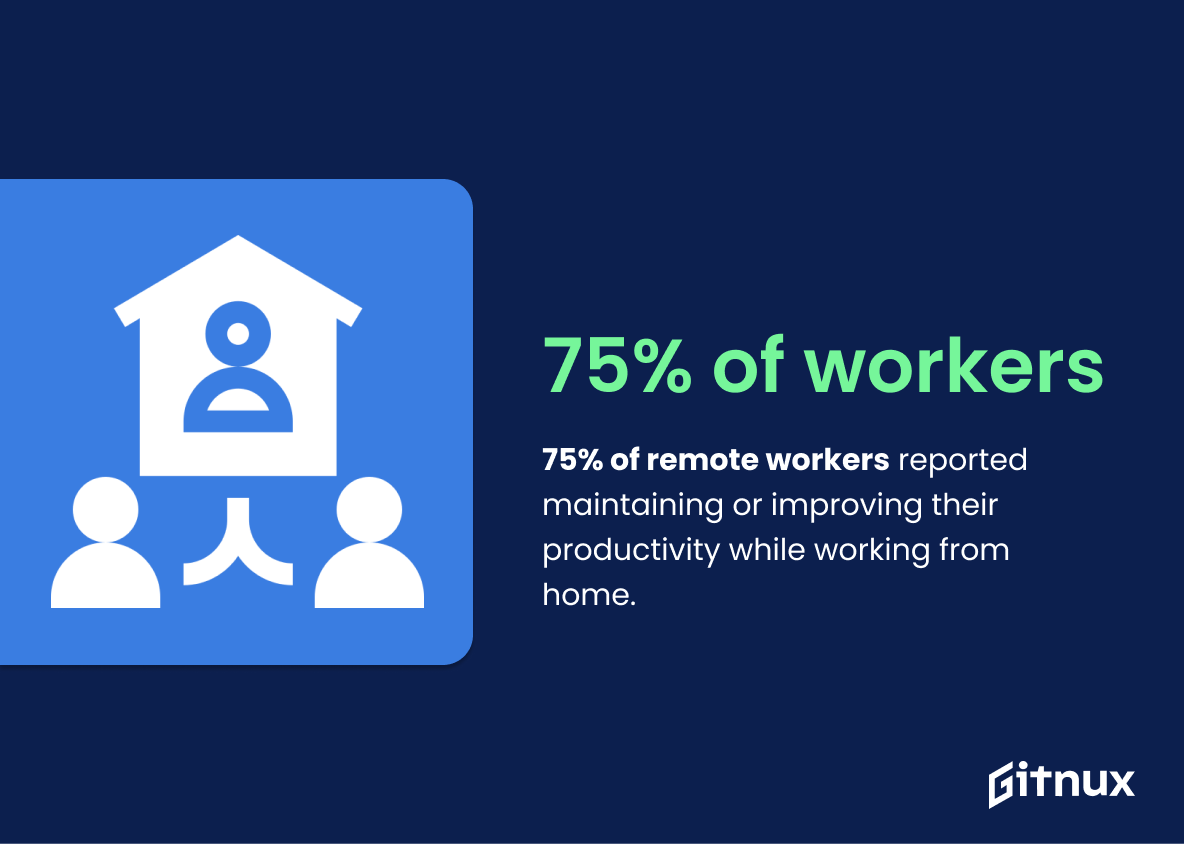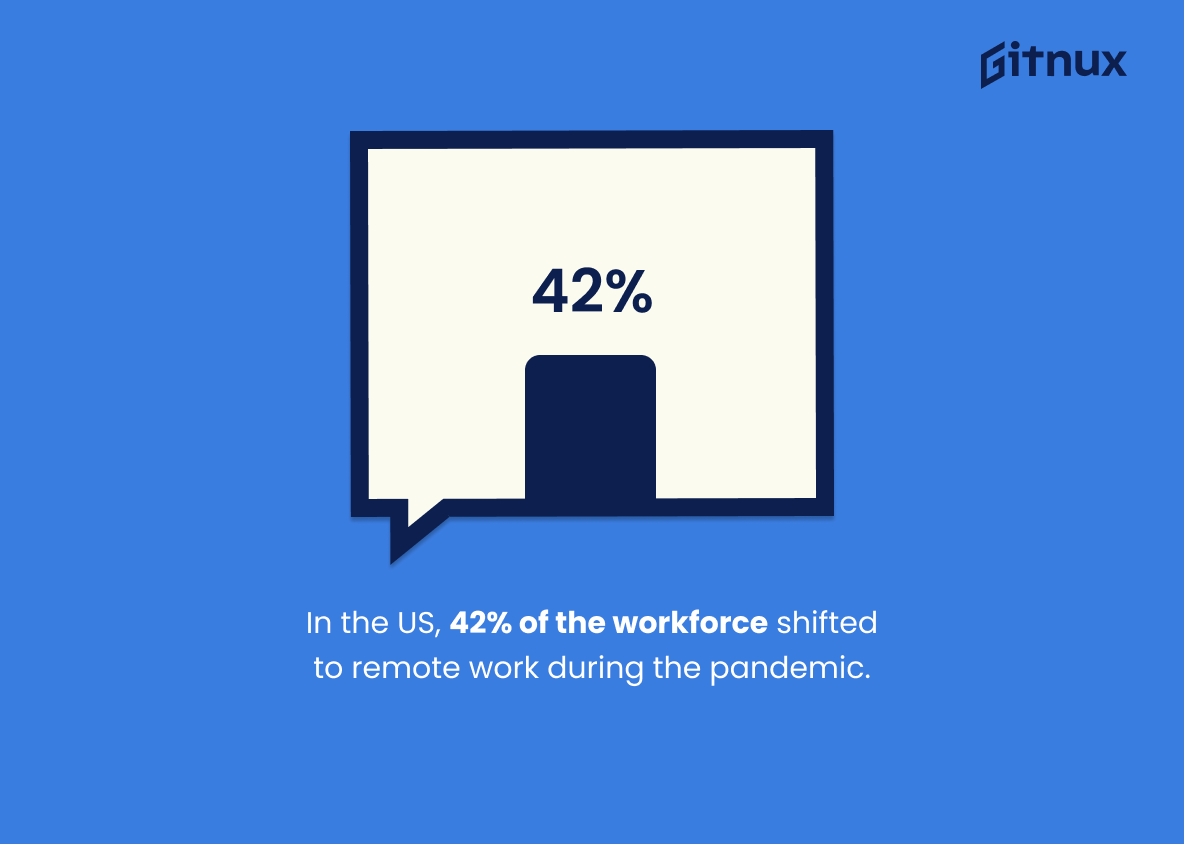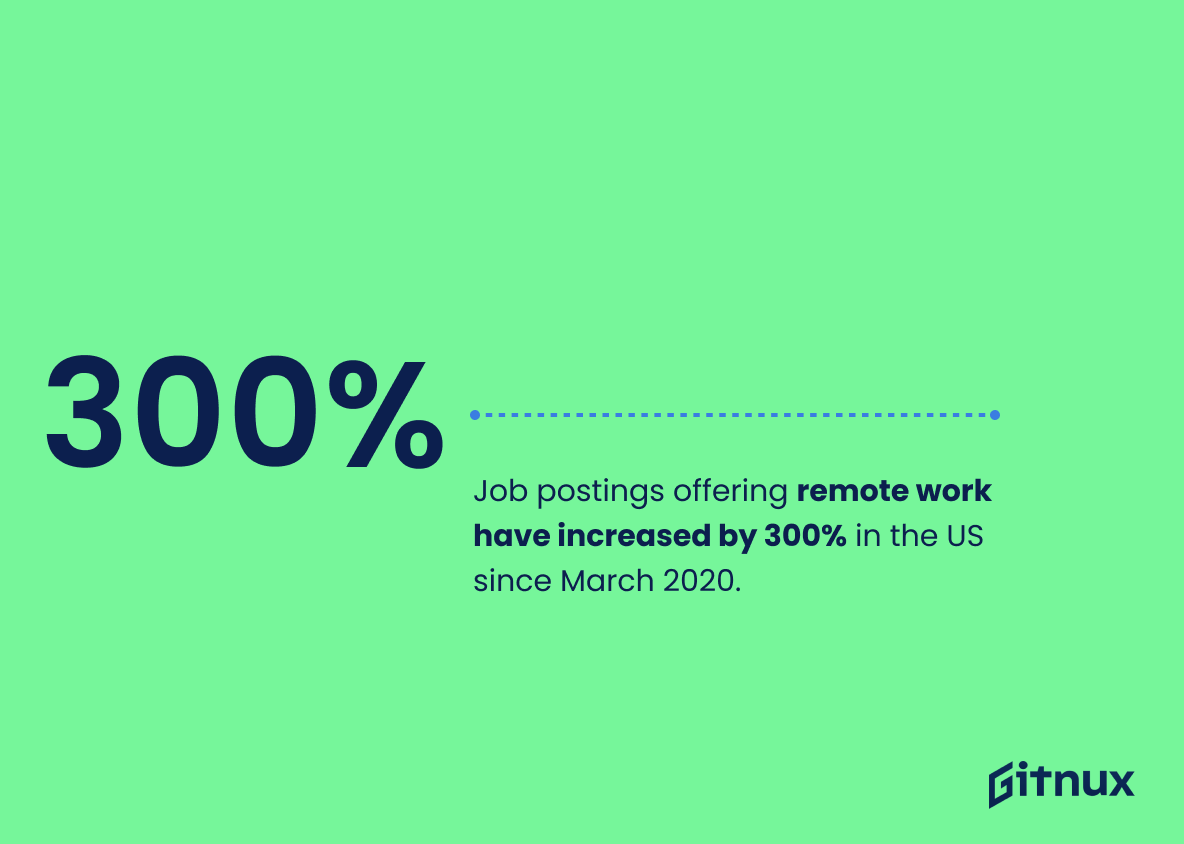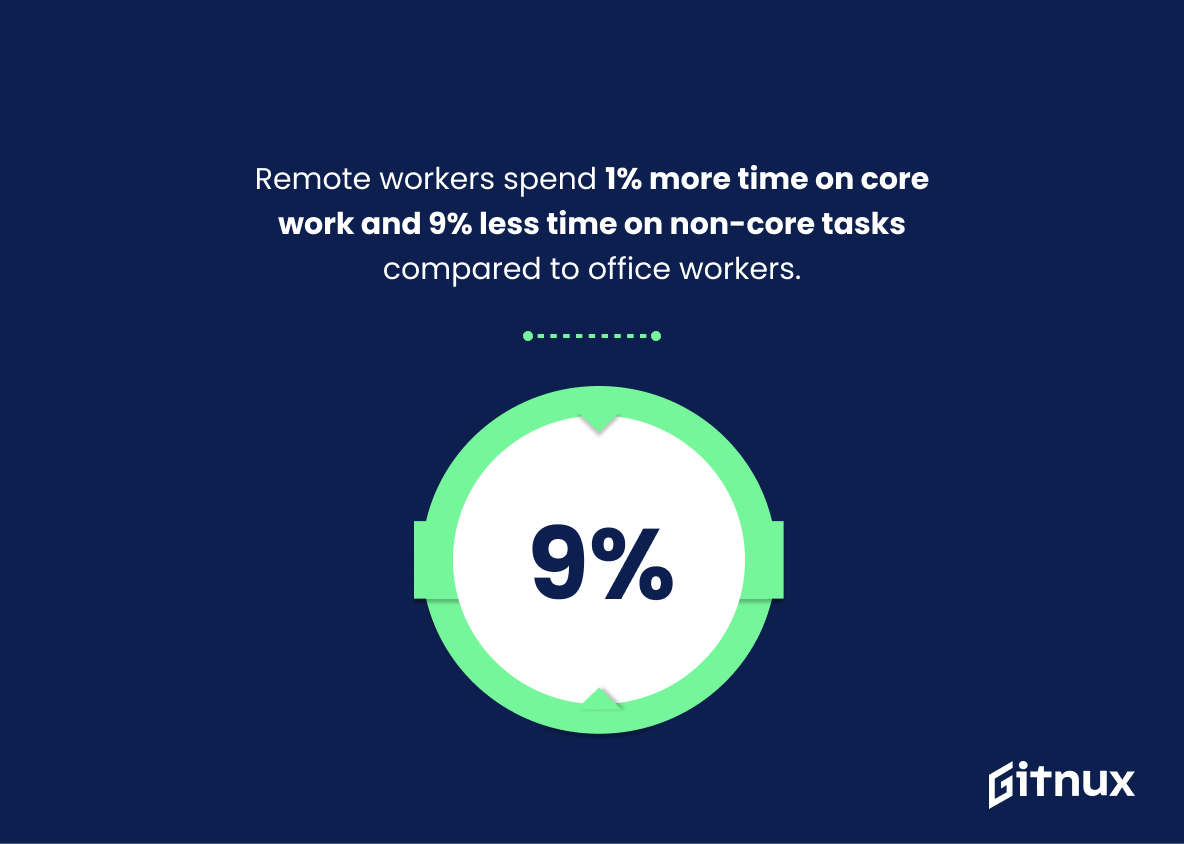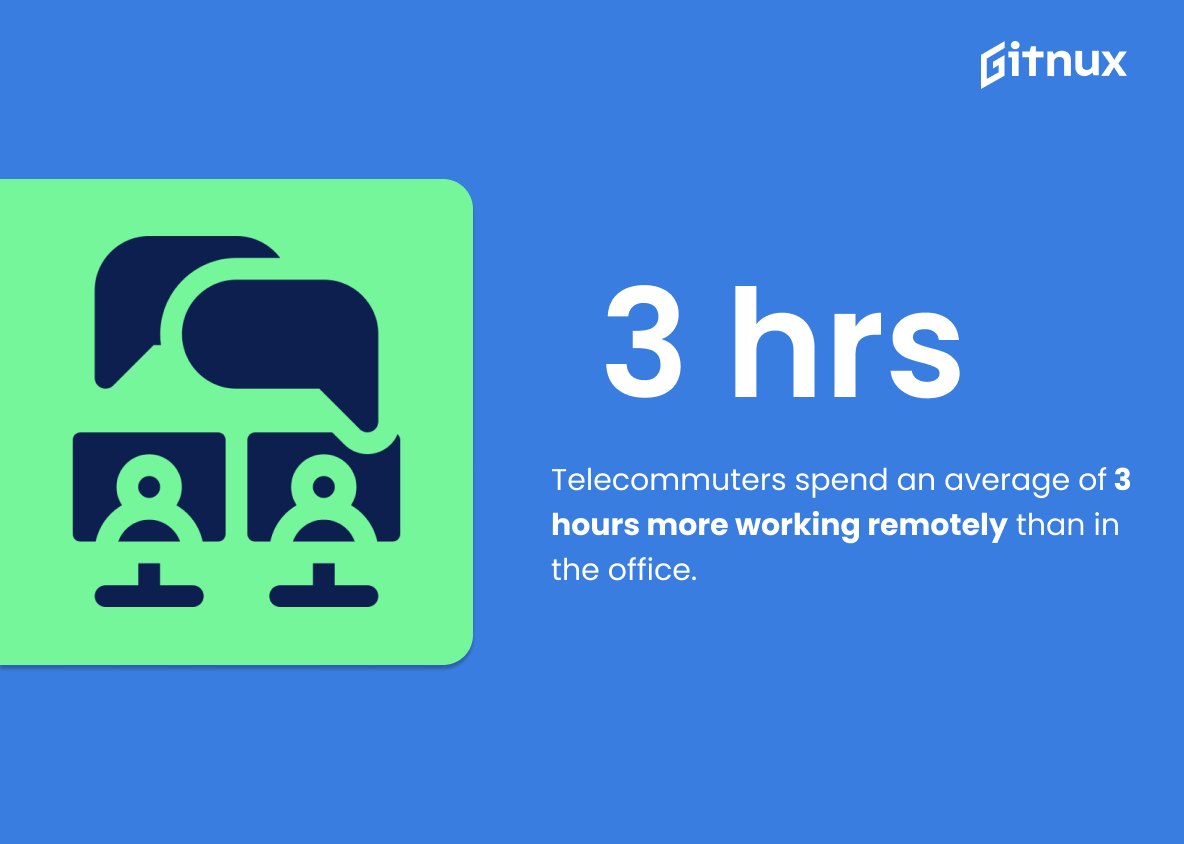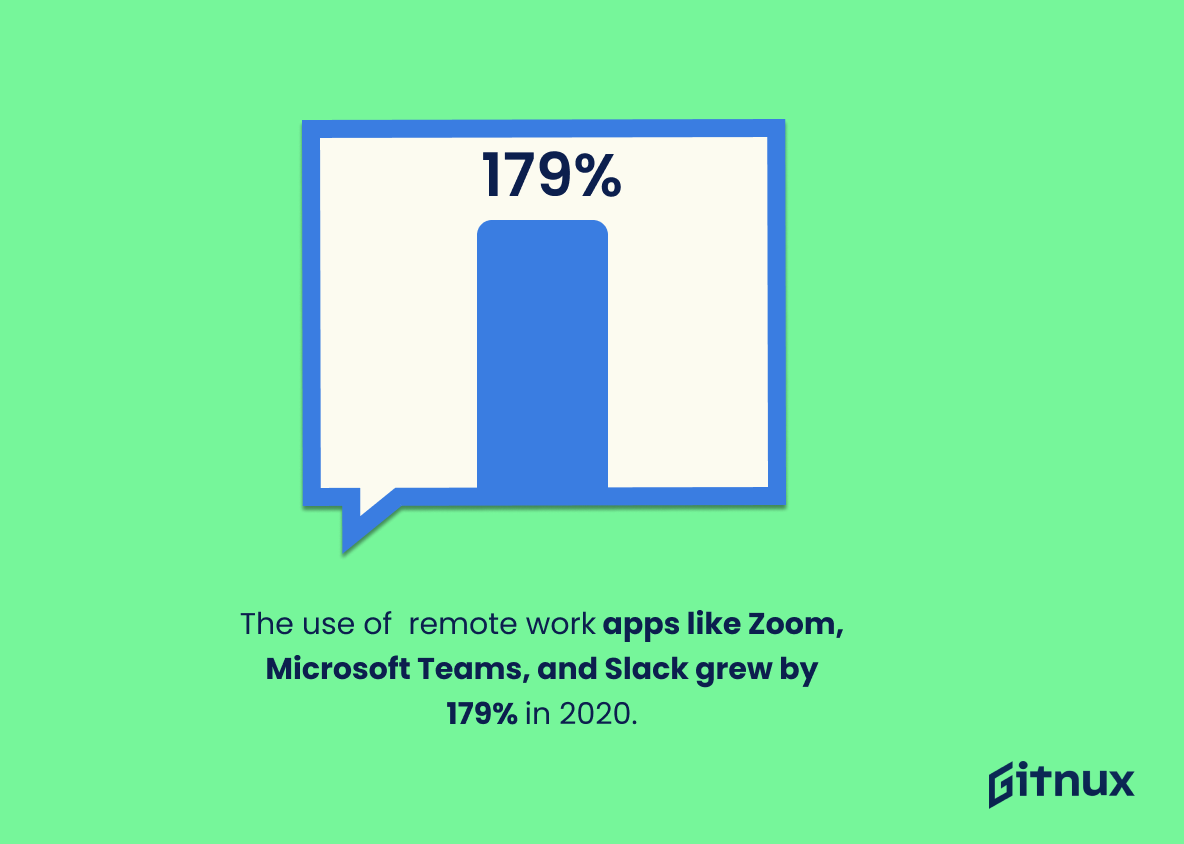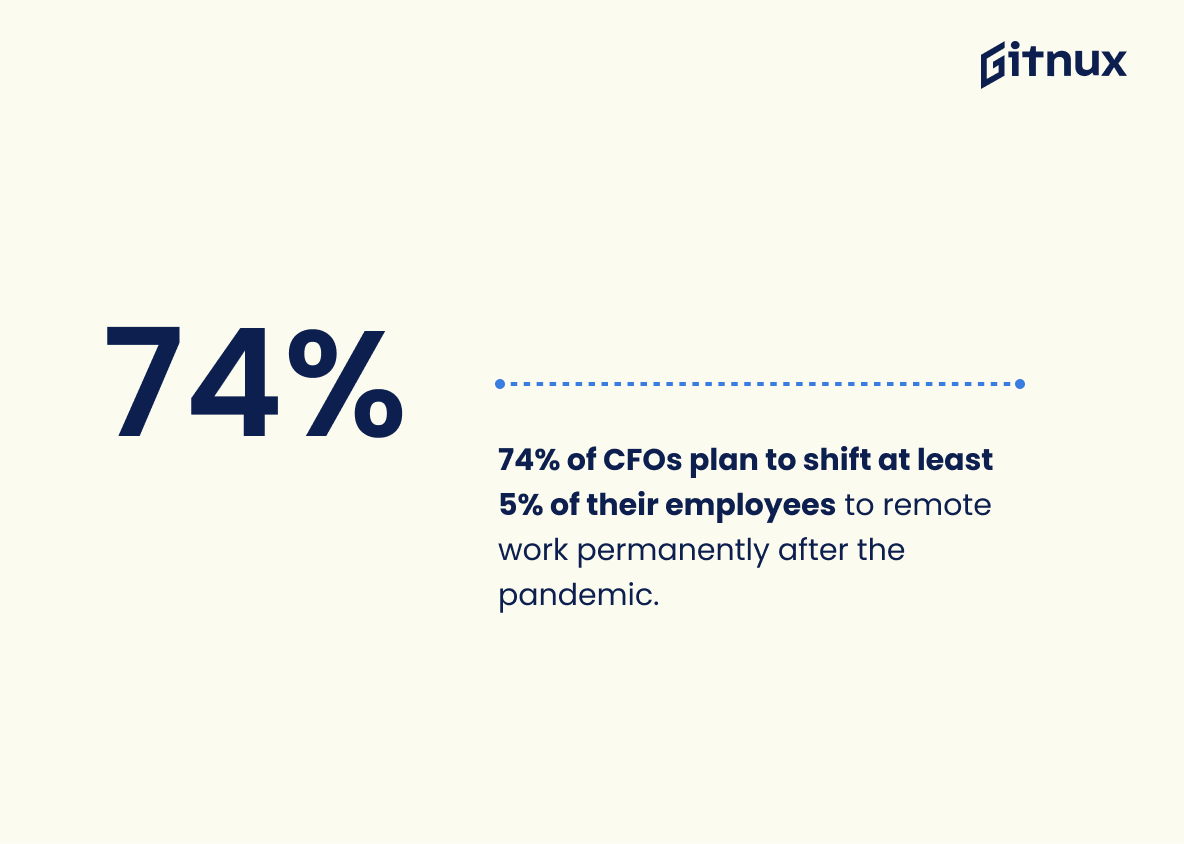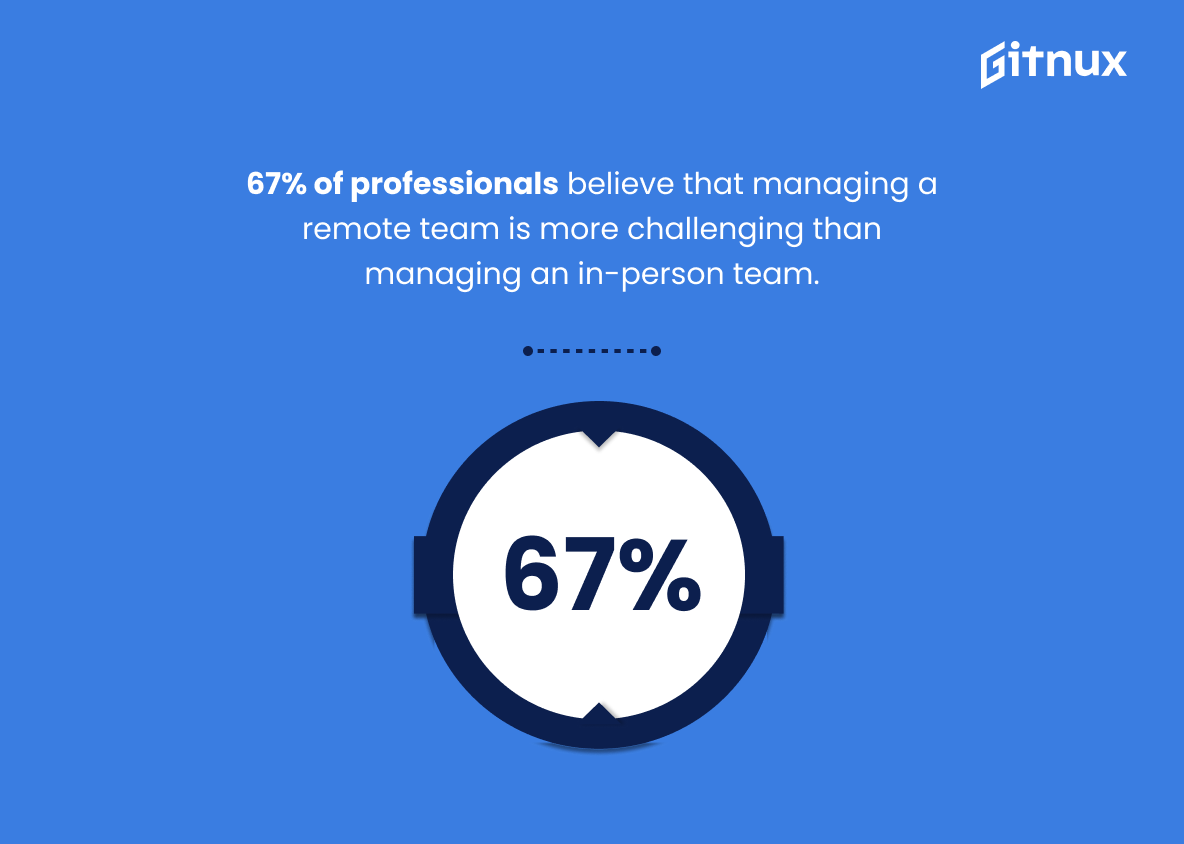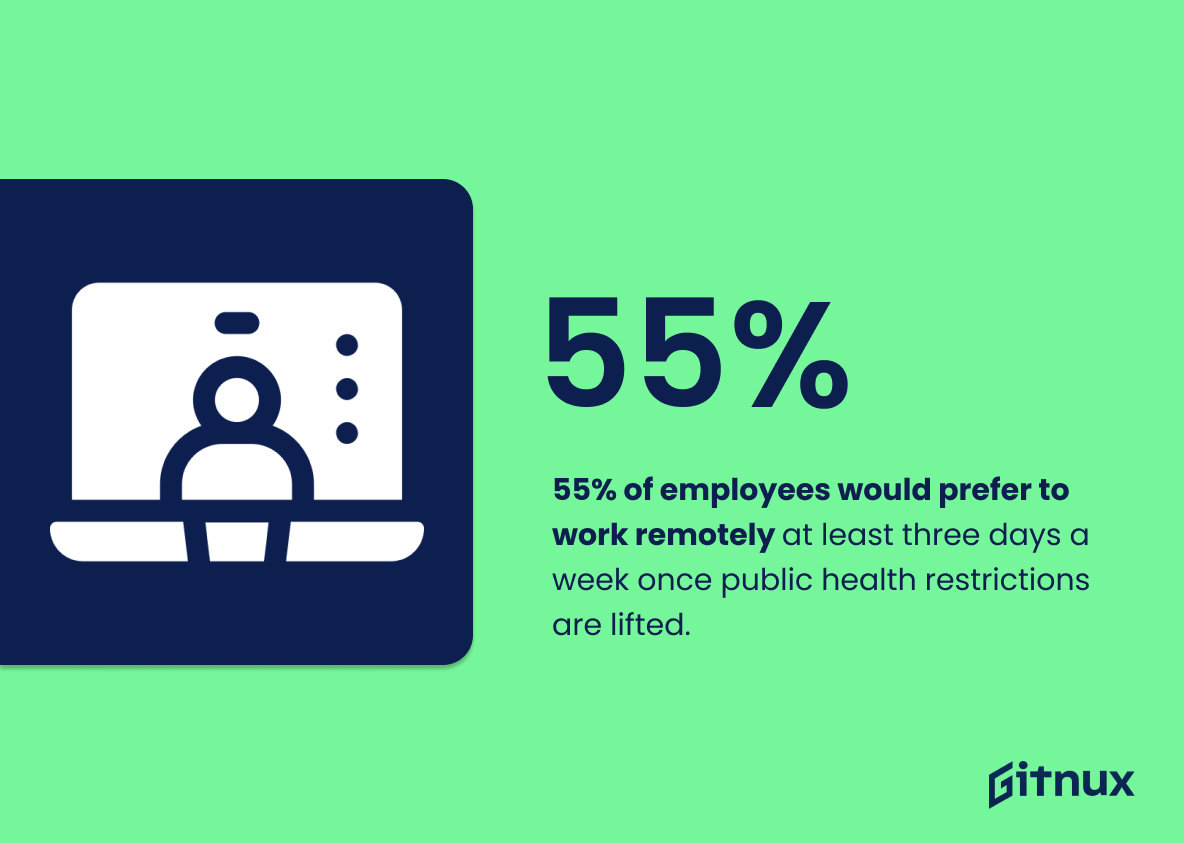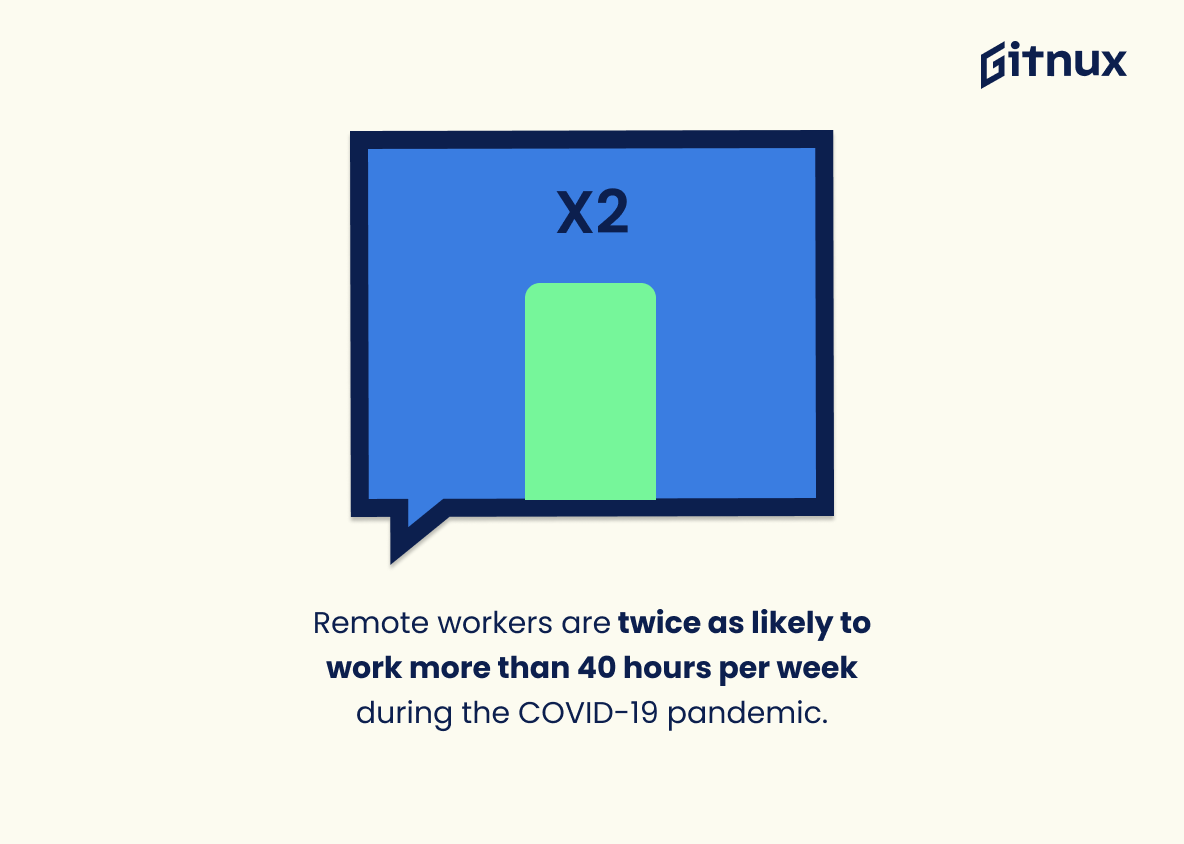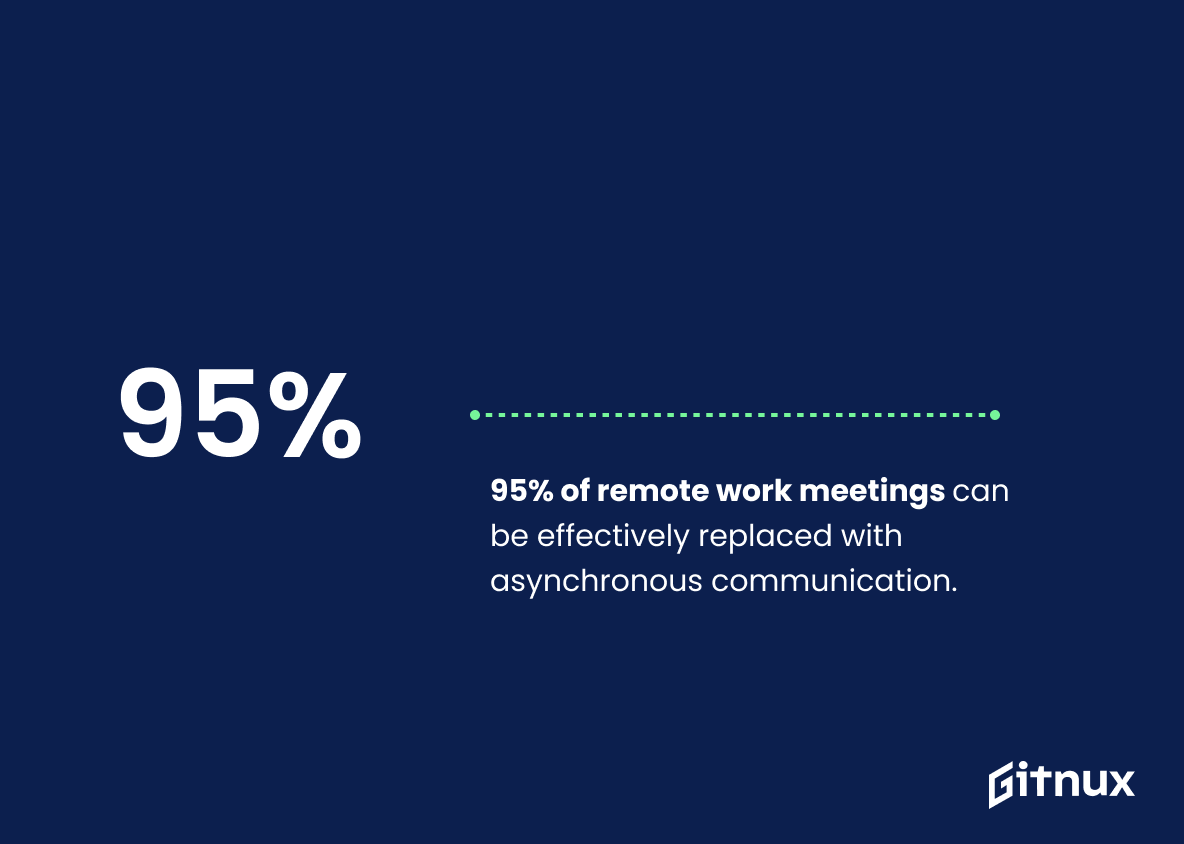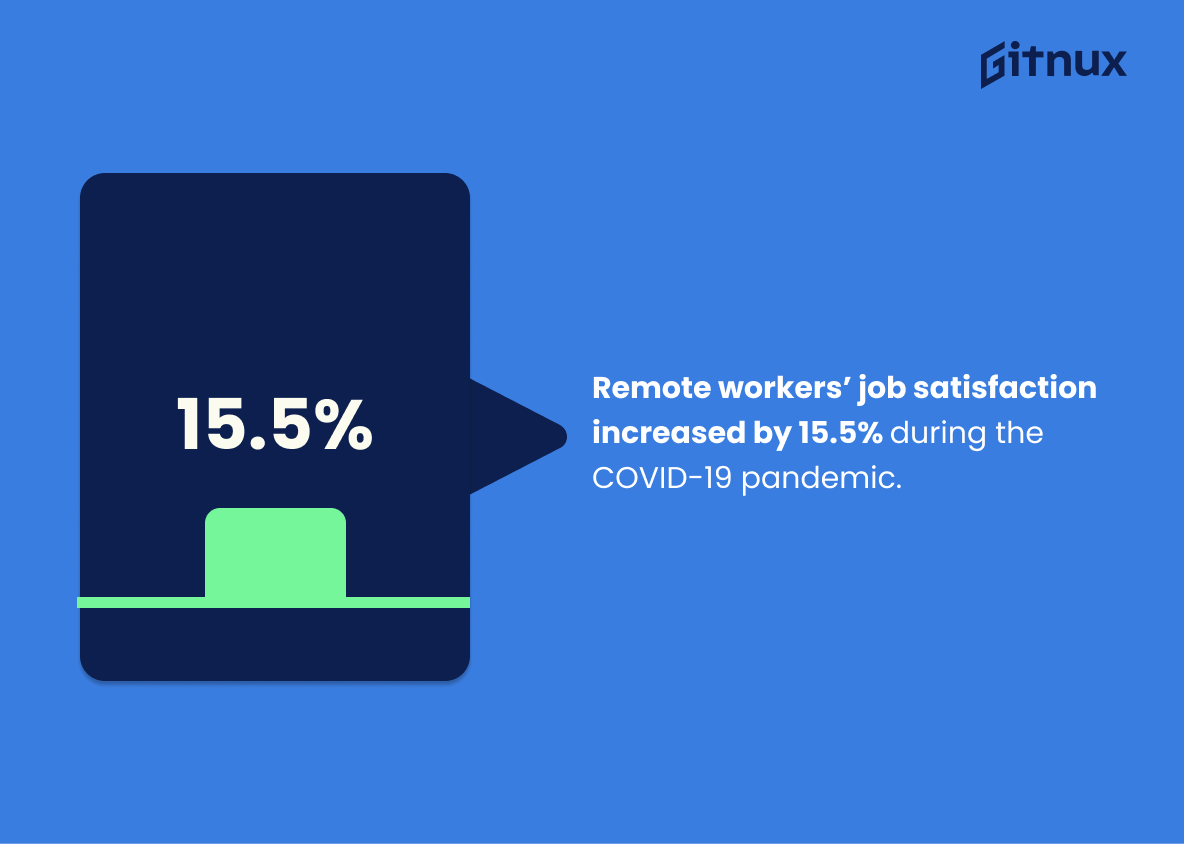The COVID-19 pandemic has drastically changed the way we work. With many organizations making it mandatory or encouraging remote work, an estimated 88% of organizations worldwide have enabled their employees to work from home due to the virus. In April 2020, 60% of employed adults in the UK were working remotely and 42% of US workers shifted to remote jobs during this time as well.
Remote working has had a positive impact on productivity with 75% reporting that they are maintaining or improving their performance while at home. It also reduced greenhouse gases by 3-4 billion tons since March 2020 and job postings offering remote positions increased by 300%. Additionally, 53.7%, 30%, and 15.5 % reported wanting to continue working from home after restrictions lift, feeling happier when doing so, and having improved mental health respectively during this period too.
However managing a team remotely is more challenging than in person according to 67% professionals surveyed; 55 percent would prefer three days per week post pandemic; 48 minutes daily was saved on commuting for telecommuters; 95 percent meetings can be replaced with asynchronous communication; 74 percent CFOs plan 5+ permanent shiftings post pandemic ; businesses save $2k-$4K/employee annually through remoting & lastly 2x likely chance for overworking 40 hours weekly compared pre covid times .
This blog will explore these statistics further along with other interesting facts about how Covid 19 impacted Remote Work Statistics around the world
This statistic is a powerful testament to the impact of the COVID-19 pandemic on the global workforce. It highlights the fact that the virus has forced organizations to rapidly adapt to a new way of working, with remote work becoming the norm for many. This statistic is an important reminder of the far-reaching implications of the pandemic and the need for organizations to remain agile and flexible in order to survive.
In the UK, 60% of the adult population were working from home during April 2020.
This statistic is a powerful indicator of the impact that Covid 19 has had on the way people work. It shows that a significant portion of the adult population in the UK had to adjust to a new way of working in a very short period of time. This statistic is a testament to the resilience of the UK workforce and the ability of businesses to adapt to the changing circumstances.
Covid 19 Remote Work Statistics Overview
75% of remote workers reported maintaining or improving their productivity while working from home.
This statistic is a testament to the success of remote work during the Covid 19 pandemic. It shows that despite the challenges of working from home, the majority of remote workers have been able to maintain or even increase their productivity. This is an encouraging sign for businesses that have had to transition to remote work, as it suggests that the transition can be successful.
In the US, 42% of the workforce shifted to remote work during the pandemic.
This statistic is a powerful indicator of the impact that the pandemic has had on the US workforce. It demonstrates the sheer scale of the shift to remote work, and the extent to which the pandemic has changed the way people work. It is a stark reminder of the disruption that the pandemic has caused, and the challenges that many people have faced in adapting to a new way of working.
Job postings offering remote work have increased by 300% in the US since March 2020.
This statistic is a powerful indicator of the impact that Covid 19 has had on the US job market. It demonstrates the dramatic shift that has taken place in the way people work, with many employers now offering remote work opportunities to their employees. This statistic is a testament to the resilience of the US job market in the face of a global pandemic, and serves as a reminder of the importance of remote work in the modern workplace.
30% of remote workers report being happier when working from home.
This statistic is a powerful indicator of the positive impact that remote work can have on employee morale. It suggests that, even in the midst of a global pandemic, remote work can be a viable option for many workers, allowing them to maintain a sense of job satisfaction and productivity. This is an important point to consider when discussing the implications of Covid 19 on remote work, as it highlights the potential benefits of this new way of working.
Remote workers spend 1% more time on core work and 9% less time on non-core tasks compared to office workers.
This statistic is a powerful indicator of the effectiveness of remote work, especially in the context of the Covid 19 pandemic. It shows that remote workers are able to focus more on their core tasks and less on non-essential tasks, allowing them to be more productive and efficient. This is an important insight for businesses looking to maximize their productivity during this difficult time.
Telecommuters spend an average of 3 hours more working remotely than in the office.
This statistic is a testament to the dedication of telecommuters, who are willing to put in extra hours to ensure their work is completed despite the challenges of remote work. It speaks to the resilience of those who have had to adjust to a new way of working due to the pandemic, and highlights the importance of providing employees with the necessary tools and support to make remote work successful.
The use of remote work apps like Zoom, Microsoft Teams, and Slack grew by 179% in 2020.
This statistic is a testament to the drastic shift in the way people work due to the Covid-19 pandemic. It highlights the need for businesses to adapt to the new normal of remote work, and the increasing reliance on digital tools to stay connected and productive. It also speaks to the resilience of the workforce, and how quickly people have been able to adjust to the new way of working.
74% of CFOs plan to shift at least 5% of their employees to remote work permanently after the pandemic.
This statistic is a powerful indicator of the lasting impact of the pandemic on the way businesses operate. It shows that the majority of CFOs are embracing the idea of remote work and are making plans to make it a permanent part of their operations. This statistic is important to consider when discussing the long-term effects of the pandemic on the workplace and how businesses are adapting to the new normal.
Remote workers save businesses between $2,500 to $4,000 per employee every year.
This statistic is a powerful reminder of the financial benefits that businesses can reap from remote work. With the Covid-19 pandemic forcing many companies to transition to remote work, this statistic serves as a reminder that businesses can save a significant amount of money by allowing their employees to work from home. This could be a great incentive for businesses to continue to embrace remote work even after the pandemic is over.
67% of professionals believe that managing a remote team is more challenging than managing an in-person team.
This statistic is a powerful indicator of the difficulties that many professionals are facing in the current climate of remote work. It speaks to the unique challenges that come with managing a team from afar, and the need for employers to be aware of the potential difficulties that come with this new way of working. This statistic is especially relevant in the context of a blog post about Covid 19 Remote Work Statistics, as it provides a valuable insight into the struggles that many professionals are facing in the current climate.
55% of employees would prefer to work remotely at least three days a week once public health restrictions are lifted.
This statistic is indicative of the changing landscape of the workplace in the wake of the Covid-19 pandemic. It speaks to the desire of employees to continue to work remotely, even after public health restrictions are lifted. This could have a significant impact on the way businesses operate, as more and more employees opt for remote work. It is a sign of the times, and a reminder that the workplace is evolving in response to the pandemic.
Remote workers are twice as likely to work more than 40 hours per week during the COVID-19 pandemic.
This statistic is a telling indication of the impact the COVID-19 pandemic has had on remote workers. It highlights the increased workload and hours that remote workers have had to take on in order to keep up with the demands of their job during this difficult time. This statistic is a reminder of the dedication and resilience of remote workers, and serves as a reminder of the importance of providing support and resources to those who are working from home.
95% of remote work meetings can be effectively replaced with asynchronous communication.
This statistic is particularly relevant in the context of Covid 19 Remote Work Statistics, as it highlights the potential for asynchronous communication to replace the need for remote work meetings. This is especially important in the current climate, as it allows for remote work to be conducted in a safe and efficient manner, without the need for physical contact. Asynchronous communication also allows for greater flexibility in terms of scheduling, as well as the ability to work from anywhere with an internet connection. As such, this statistic is a testament to the potential of asynchronous communication to revolutionize the way we work in the age of Covid 19.
Remote workers’ job satisfaction increased by 15.5% during the COVID-19 pandemic.
The statistic of remote workers’ job satisfaction increasing by 15.5% during the COVID-19 pandemic is a testament to the resilience of the workforce. Despite the unprecedented challenges of the pandemic, remote workers have been able to maintain a high level of job satisfaction, demonstrating their ability to adapt and thrive in a new environment. This statistic is a powerful reminder of the potential of remote work and the importance of providing employees with the necessary tools and support to succeed.
Conclusion
The statistics presented in this blog post demonstrate the significant impact of remote work on organizations, employees, and society as a whole during the COVID-19 pandemic. The data shows that 88% of organizations worldwide made it mandatory or encouraged remote work due to COVID-19, with 60% of UK adults working from home during April 2020. Remote workers reported maintaining or improving their productivity while 75% said they were happier when working from home.
In addition, job postings offering remote work have increased by 300%, and 53.7% would like to continue after the pandemic is over. Furthermore, telecommuters spend an average 3 hours more per day than office workers do; businesses save between $2,500-$4k per employee annually; 95% of meetings can be replaced with asynchronous communication; and job satisfaction has improved 15%. These findings suggest that many people are likely to remain in some form of flexible/remote employment even after public health restrictions are lifted – 55 percent prefer at least three days a week remotely – which could lead to long term environmental benefits such as reduced greenhouse gases emissions (3-4 billion tons).
References
0. – https://www.gartner.com
1. – https://www.ons.gov.uk
2. – https://www.businesswire.com
3. – https://www.smarterqueue.com
4. – https://www.finder.com
5. – https://www.cbsnews.com
6. – https://www.nber.org
7. – https://www.owllabs.com
8. – https://www.thesimpledollar.com
9. – https://www.news.stanford.edu
10. – https://www.lucidchart.com
11. – https://www.statista.com
12. – https://www.cnbc.com
13. – https://www.livability.com
